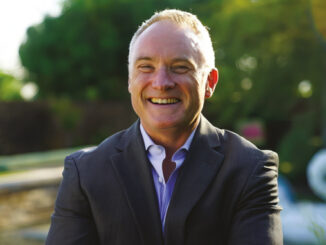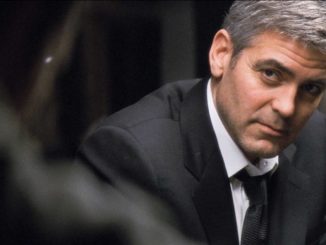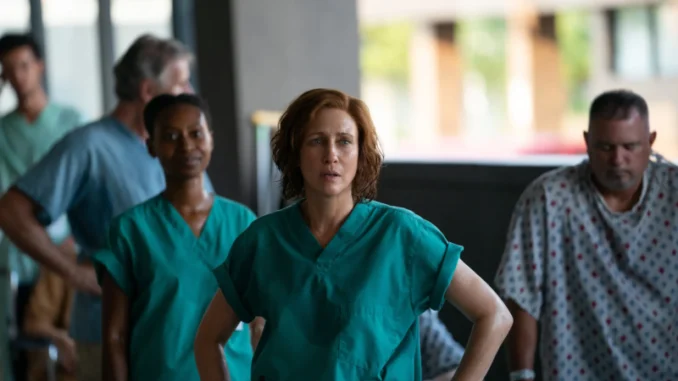
By Rob Feld
“Five Days at Memorial,” AppleTV+’s eight-episode series based on the book by Sheri Fink, presents the events at a New Orleans hospital in the aftermath of Hurricane Katrina, integrating archival footage with its scripted material. As the unprepared city, hospital, and rescue infrastructure buckled under the flooding when the levees broke, the series follows hospital staff as it struggles through physical trials, chaos resembling the fog of war, and the ultimate realization that they will not be able to evacuate the most vulnerable and difficult-to-move patients once they are ordered to evacuate the building. In the aftermath, bodies of apparently euthanized patients were discovered at the hospital, and investigators went in search of what happened.
The series, which began streaming earlier this year, tasked its editors with blending disaster thriller drama with a more procedural format in its latter episodes, in its attempt to lead the audience into the horrific events that transpired, the characterizations, and the subsequent investigation. With a great deal to track and integrate into an emotional but also event-driven story, and with a concerted effort to avoid handing their audience easy answers to the situations’ moral dilemmas, the picture editing team of Colin Rich, JoAnne Yarrow ACE, Luyen Vu ACE, Vikash Patel, and Marie Lee relied on close collaboration to see them through.
CineMontage: What was unique to you when you first came on this project?
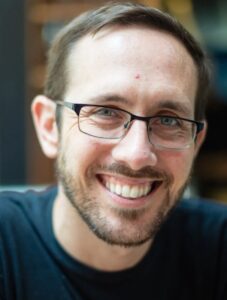
Colin Rich: That the series was bifurcated was interesting. The first five episodes were written by John Ridley as a day-by-day accounting of the events during and after the storm. The last three were written by Carlton Cuse as the postmortem, trying to make sense of everything, grappling with the consequences of everything that happened. They had different styles and approaches. That archival footage was going to lay into it as a piece of the storytelling to contextualize and ground the story, of which not everybody is aware, was also interesting to me. The first half is really about understanding where the characters are from, their walks of life and their relationships with the hospital, whether it’s a doctor or a nurse, a patient, administrator, or family member. Empathizing with them, which informs the editing in a lot of ways. One of the main ways we do that on John Ridley projects is by using closeup, even if it’s a little uneasy and [means] hanging with that character for long periods of time.
CineMontage: What was a concern coming into it?
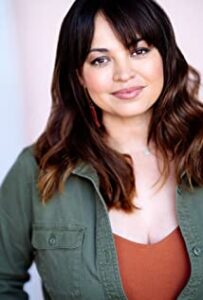
JoAnne: You want to be careful not to push things to a point that feels exploitative of these true stories. That’s the line you walk with a story like this. We had archival footage of dead bodies. How much are we going to use of that? Or if we are going to show that image, would feet floating in the water be more respectful and still convey the severity of what is happening?
Luyen Vu: There was a real delicacy with how we wanted to handle everything, so we just had to figure out what that was. We didn’t want to color it in any manipulative way. There were moments where a piece of score was quite good, but it was saying something when we would want to allow the audience to make that decision. To be perfectly honest, I was very much against the archival footage at the beginning. I was worried that it would be manipulative. But, as we got into it and I spent more time with the footage, it became important to use to tell the real part of the story, while also focusing the tragedy of the entire experience on this one hospital.
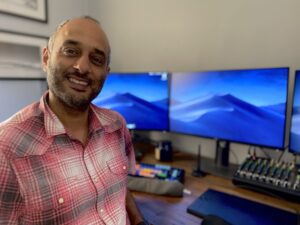
Vikash Patel: I came in for Episode 7 as the first five were close to cementing themselves. They were so internal with the characters. But then you get to Six, Seven, and Eight and it’s so objective—in many ways like a procedural. As much as you want to not force it to feel like the first five, I still had that urge to muck them up so they felt similar. But in many ways, they fell apart when I did. They are emotional in a different way because we come to live the harrowing memory and start living with these characters in an objective way.
CineMontage: How did you collaborate to calibrate the audience’s sympathies and understandings? There’s so much to track and take into those final episodes.
Colin Rich: There was a lot of back and forth and discussions about theme and intention and asking what really happened. We even came up with a requested shot list. There are scenes written in such a way as to be extremely open to interpretation, even having worked on them. We all talked amongst ourselves, just trying to wrap our own heads around it. The scripts were a great roadmap in terms of the character arcs, intention, theme, and are remarkable documents in and of themselves.

Marie Lee: I think Anna Pou’s religious moments were a big part of the episodes that I worked on; there’s one where she does her prayer and we hear her in voiceover amidst the chaos. As I recall, that was something we came up with together and it was exciting to discover.
Luyen Vu: As good as the scripts are, I think John did leave things up to the audience to interpret; up to us, up to anybody who is involved. I remember having conversations with JoAnne, Colin, Viks, and Marie and asking, “Do you think this person means what they are saying? Or do you think they mean something else?” And there were times when I would go to Carlton and say, “John wrote this script, but what do you think this person is saying?” And there would be a whole discussion. So, I think there’s no rule in terms of how we decided. It was always, “How do we feel about it within the sculpting of it all?”
Colin Rich: In the last three episodes, we had to be careful not to tip our hand in terms of who we thought was guilty of performing euthanasia. So, there were many instances where we would cut out scenes or dialogue if we felt like we were vilifying someone too much, or make a change if there was proverbial mustache-twirling music over a certain scene.
CineMontage: Can you talk to me about the tonal shift into the last three, more procedural episodes and keeping an audience engaged?
Colin Rich: There is a built-in shock factor in finally seeing the two investigators, whose hands we’ve seen and voices we’ve heard at the openings of the first episodes. Episode Six starts with a similar interview, but we finally cut around and see them. Then suddenly you’re following this investigator through his life, wondering what’s happening until you realize that he has his own story. There’s an aspect to it of jumping into the pool feet first, seeing these investigators and following a character who’s ostensibly a stranger, while maintaining some similarities.
Luyen Vu: We knew that there was going to be this weird transitional period between two sections, and we always knew that depicting what actually happened at the hospital was less important than why it happened and how we felt about it. Giving the investigators a human part of the story was important to why they would be so dedicated to their investigation.

Vikash Patel: By Episode 6, the investigators are a proxy for the audience to ask questions. They’ve just seen and lived the first five episodes, where some things are not revealed—where you’re just in it. So as a proxy for the viewer, they allow us to question, “Was this ethical or was it not?” You’re not told the answer, you come to your own conclusion. But we had to be very smart about what we said and what we didn’t say. I think the way it was all conceived was very smart.
Luyen Vu: I think the big question of the entire series is, “Should this have happened?” And I think without giving some sort of depth to what that question is to each individual character, it doesn’t mean anything. To John and Carleton’s credit, they thought about that very carefully. They didn’t make that decision lightly.



